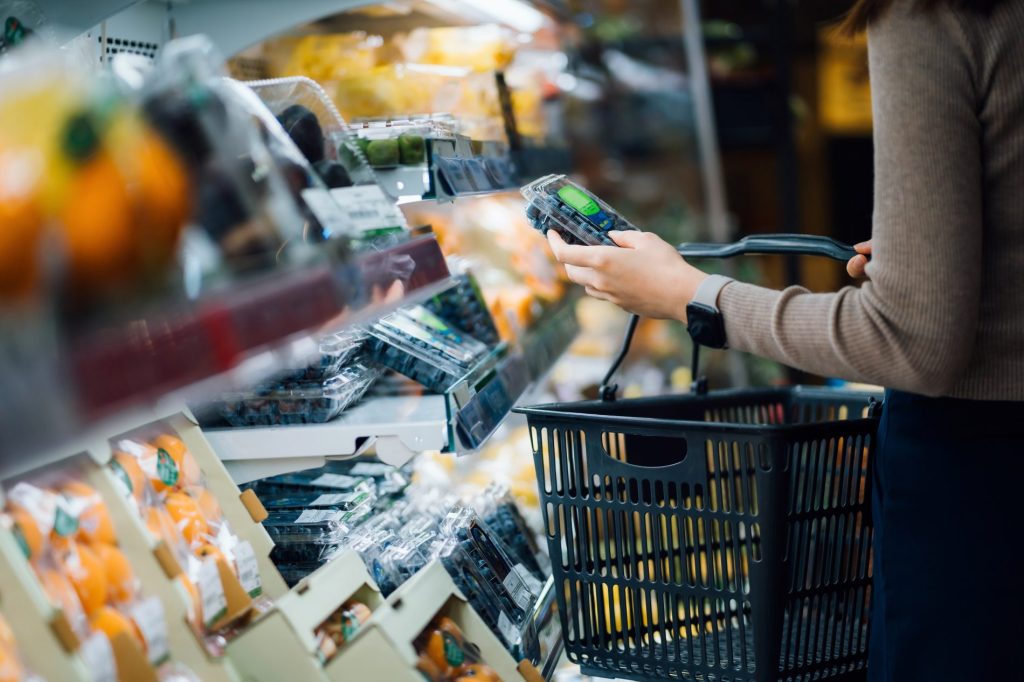NIQ data shows that seasonal items are significantly more popular during their season than at other times of the year — in this article we’ll explore why this is the case, and what can we learn from seasonal events.
‘Tis the season
Advent Calendars and chocolate Easter eggs are just two products of a growing list of seasonal retail events, ranging from the more traditional like Easter, Valentine’s Day, Christmas and Halloween, to the retail-sponsored newcomers, like Black Friday. Some are public holidays, which increase leisure time and boost sales, others rely solely on promotional or themed activities — all require a closer look at seasonal buying behaviors to drive growth, and many offer opportunities for creative promotion.
For example, in the US, Easter holiday campaigns are big business. According to NIQ research, dollar sales of chocolate in the US increased 83% during the week of this widely celebrated holiday:
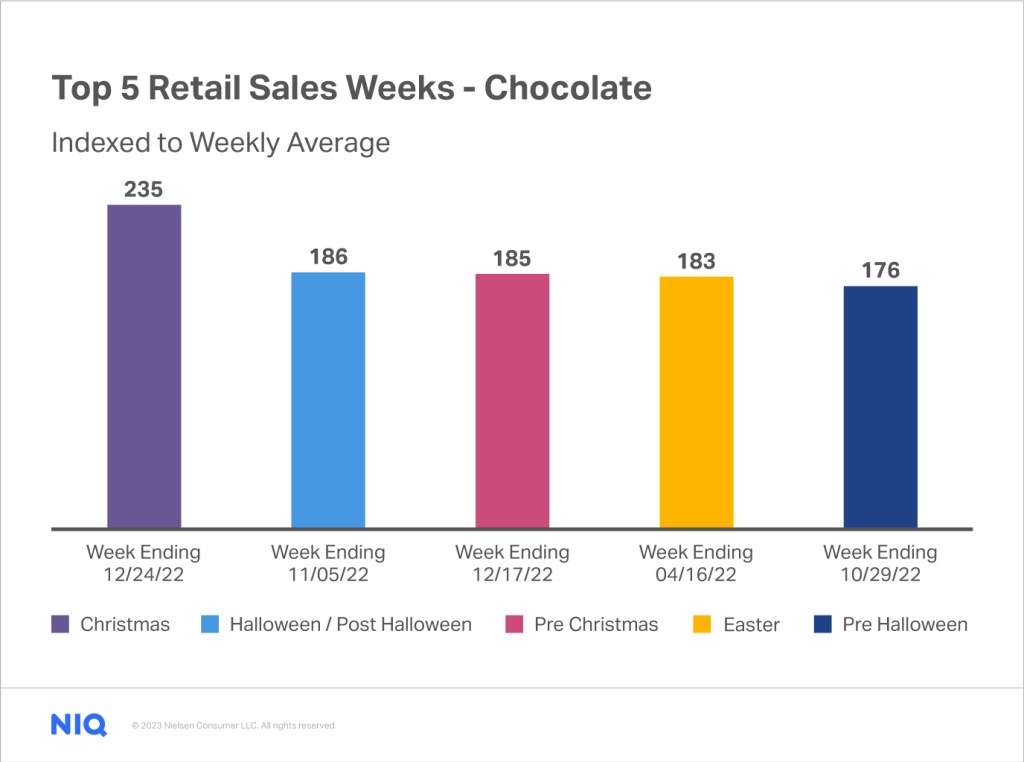
Outpacing Easter, the week of Christmas was the #1 sales week for chocolate by far, showing a 135% increase in US sales. The social aspect of the holiday is a huge driver, as consumers buy packaged chocolates to give as gifts, fill stockings, and serve with other sweets during holiday parties and gatherings. Halloween was the next top-selling week for chocolate, with sales rising 86%. Similar to Christmas, sales increase more during the week of Halloween than the week preceding Halloween, likely due to last-minute candy shopping.
Of course, there can be significant variation or nuance within a category. According to NIQ Connect Total Store data, Easter is the #1 holiday for milk chocolate sales, followed by Valentine’s Day and Halloween.
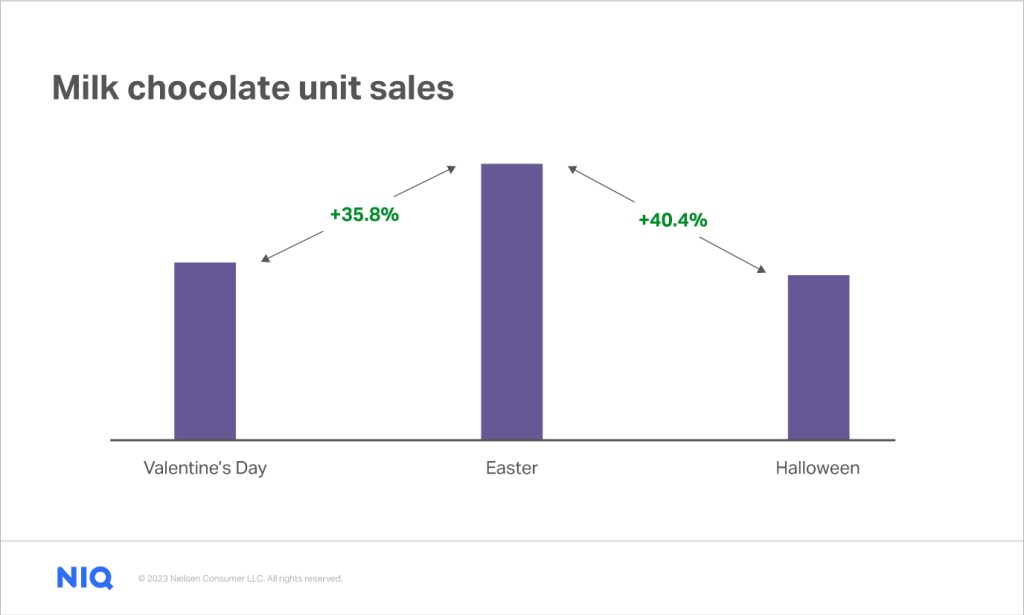
Beyond chocolate, Easter weekend is a tremendous food- and beverage-consuming occasion that touches nearly every category in the store — from produce to dry grocery, alcoholic beverages to soft drinks, and beyond. It’s also a huge time for spice sales, selling 18% more units than Memorial Day and 6% more than Labor Day. And almost 6% of the entire year’s beverage alcohol volume happens leading into the holiday weekend. Even cosmetics and other health and beauty aid categories are affected by the impending holiday, because who doesn’t want to look their best on Easter Sunday?
While traditional foods like ham, potatoes, fresh baked breads, and traditional deserts rank high, there is a growing number of people that have an Easter “tradition” that isn’t rooted in the religious aspect of the holiday. Easter for them is the gathering of friends and family under a self-defined tradition. Fully 25% of the US population says they have no religious affiliation according to a 2019 article in the Washington Post. This means that frozen lasagna and Thai food can be just as much a part of an Easter tradition as lamb and grandma’s green bean casserole.
Find out more information on NIQ analytic solutions to help you plan your promotions and analyze your assortments.
Sporting events spike seasonal sales
Although the week of Christmas takes the crown as the top-selling week for salty snacks, the Superbowl stands out as a heavyweight: sales of salty snacks increased 11% during the week of the 2023 event.
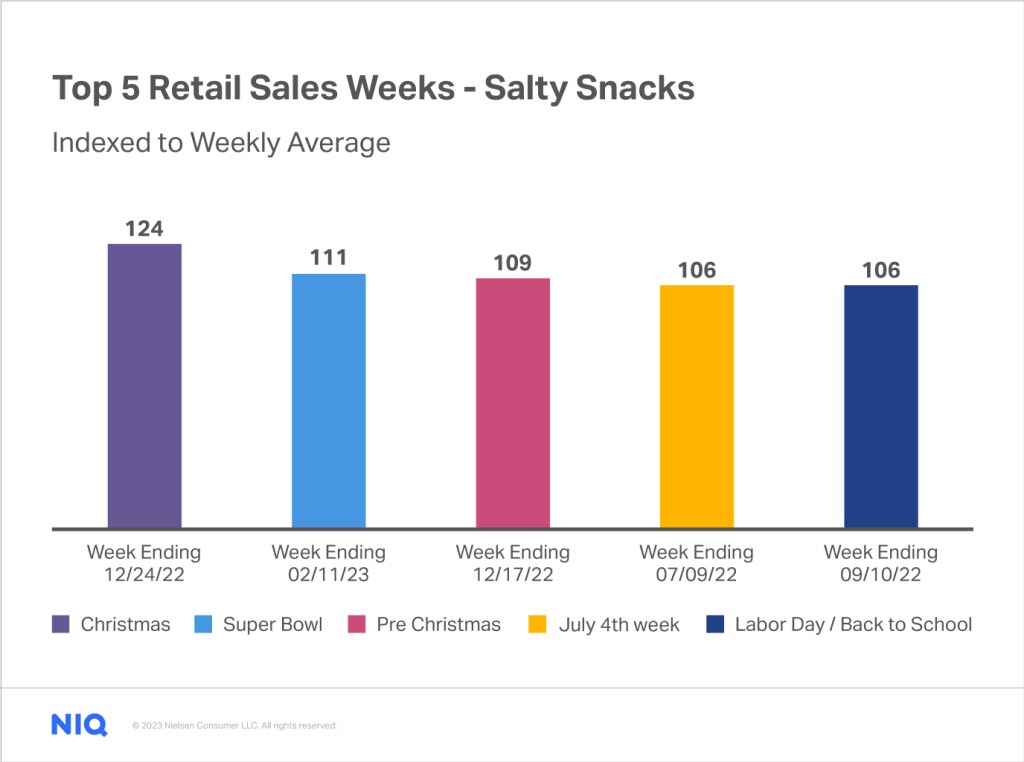
Sports events are also are powerful and lucrative seasonal opportunities for companies to market their products.
Retailers and brands run large campaigns for sporting events like the Super Bowl, World Cup, Rugby World Cup, Olympics and more, creating updated product packaging, providing deals on specific categories of product, and even releasing special varieties of existing ranges. These events-based dates on the retail calendar play a vital role in achieving growth for both brands and retailers.
Events offer powerful opportunities to tell a brand story and promote products that link to relevant events online. Events are essential to encourage the extra purchases that drive growth, especially when considering the cost-of-living crisis the world is facing, as shoppers are more careful with the money they do wish to spend.
Even products in seemingly unrelated categories can benefit from seasonal events. For example, during social holidays like the Superbowl, families cook and entertain more. They’ll also have to clean more, so cleaning products could see a sales bump from the holiday as well. Done right, updated marketing content can boost the profile of these products with consumers.
There are also opportunities for complementary categories. A healthy snack manufacturer could promote its products near the Superbowl with health and wellness-focused messaging, such as encouraging shoppers not to give up on their New Year’s weight resolutions.
However, between retailers’ private label Easter eggs, branded peanut butter chocolate eggs, staples like chocolate bunnies, and newcomer favorites like white chocolate Easter treats and more, shoppers have almost too many choices for which treats to purchase.
Where can you start to make sure you are standing out during an event and highlighting the marketing content for the occasion?
How to stand out during seasonal campaigns
There is fierce competition during seasonal events so brands are challenged to stand out on both the physical and digital shelf. Marketing content that focuses on a specific event can attract new shoppers to your brand, increase engagement, and push them into your sales cycle.
Retailers’ product pages are an important step in these seasonal marketing strategies. With the increase of e-commerce, shoppers have more and more choice when shopping online — the content on product pages can help them make up their minds.
Brands can leverage seasonal product content — interactive content that boosts shopper engagement — on their product pages to stand out during and event and to increase their conversion rates. Seasonal product content is the extra mile brands can take on the digital shelf to implement high converting product pages during an event and transform their sales.
One form of seasonal content could be interactive content — a GIF, video, recipe, etc. — designed for the seasonal event. Interactive content instantly gives your audience useful, relevant, and important product information in a way that is easy to consume. By making sure your product pages contain interactive content, you are co-creating a positive user experience with your shoppers, and creating a stronger relationship.
95% of shoppers are more likely to purchase after watching video or interactive product tours on a product page.
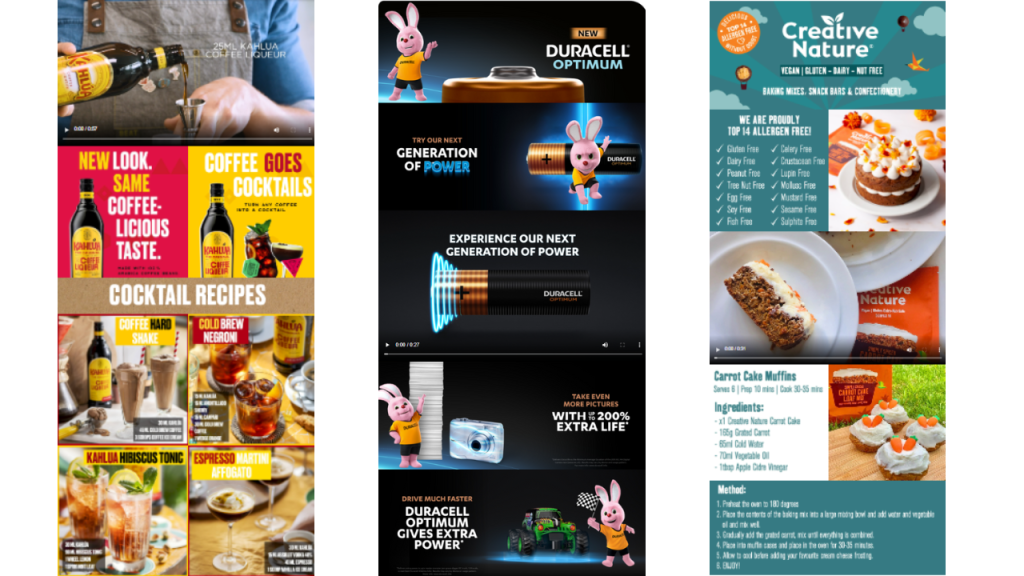
Traditional product pages do not allow for interactive product content or additional marketing images to be easily implemented, and it will be harder for brands using traditional product pages to show seasonal product content.
However, brands who use enhanced content can see significantly higher shopper engagement. Product photos are critical for building confidence and giving the shopper a strong grasp of what it is they are buying; in fact, they are one of the most powerful components of your product page. UK supermarket chain Sainsbury reported a 47% increase in interaction on product pages when showing 5 additional images and videos.
But enhanced content can also be an opportunity to implement recipes, videos, or sponsored content, linked to the event directly on retailers’ product pages. A good example of seasonal product content might be a chocolate bar brand showing a recipe for chocolate Easter cupcakes utilizing their products. This would increase shoppers’ engagement — and increase the number of the brand’s chocolate products that are added to baskets.
Updating the enhanced content to match the current season is a great way to keep shoppers engaged with product pages and implement seasonal product content easily. The key is regularly adapting and updating your product pages to keep shoppers engaged and excited.

Anatomy of a product page
Understanding the power of seasonal events is key but leveraging your product pages is just as important to drive sales across all channels.
Download our free eBook to find out how we can help you improve your product pages ahead of this year’s seasonal events.
The full view of seasonal shopping behavior
To tap into the best seasonal opportunities for their brands, manufacturers need a full view of shopper behavior in the categories they compete in. Leveraging seasonal product content is crucial for standing out from the crowd when consumer demand is highest.


